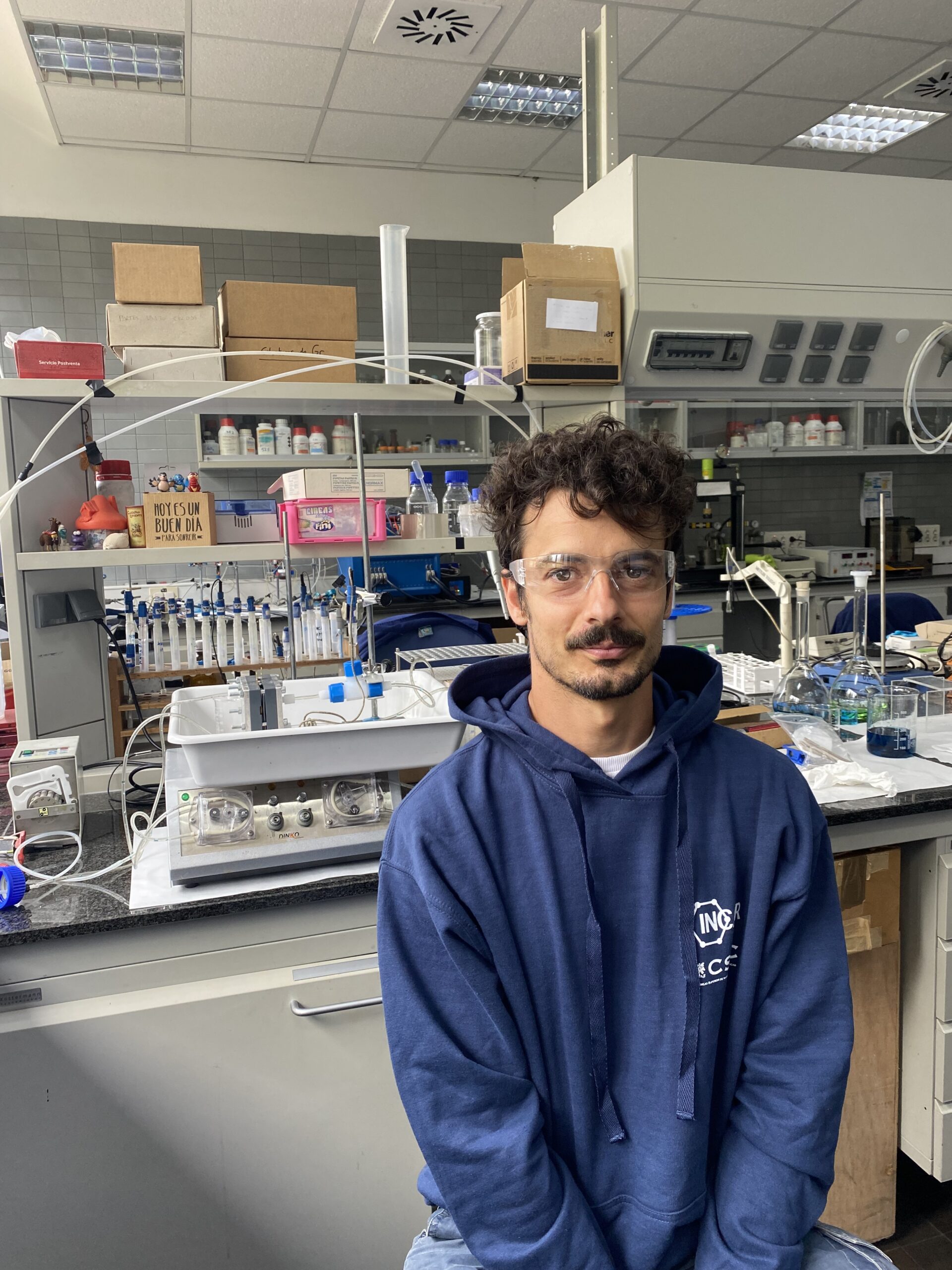
Jonathan Ruiz Esquius (Terrassa, 1990) holds a bachelor’s and a master’s degree in chemistry from the Autonomous University of Barcelona (Spain). He then moved to the Cardiff Catalysis Institute (United Kingdom), where he received his PhD in 2019 for his work on iridium-based catalysts for the electrochemical oxygen evolution reaction (OER) and on PdZn alloys for the thermal CO2 hydrogenation to methanol.
He remained at the Cardiff Catalysis Institute for a post-doctoral position where he worked on the thermal synthesis of synthetic fuels over hybrid catalysts. In 2021, he joined the International Iberian Nanotechnology Laboratory (Portugal) to work on the design of electrocatalysts with reduced iridium-loading for OER. In April 2023, he joined the Instituto de Ciencia y Tecnología del Carbono (INCAR, CSIC) in Oviedo (Spain) as a ComFuturo fellow to develop his project NHEMOE.


Extended project summary:
The generation of energy has historically relied on fossil fuels, with the associated environmental costs. To reduce the greenhouse gases emissions associated with the production of energy, such as CO2. Energy must be obtained from renewables. Nevertheless, parallel systems that enable the storage of such electricity needs to be also developed. For example, this could be achieved by producing hydrogen (and oxygen) from the electrolysis of water (H2O ⇌ H2 + ½ O2). Hydrogen can then be used as a “green fuel”. At present, research on the development of electrocatalysts that can withstand relevant operating conditions is still needed, specially under acidic conditions. In addition, a major bottleneck for acidic water electrolysis is that it employs scarce and expensive noble metal-based catalysts. For instance, Pt and Ir are employed as catalysts for the hydrogen and the oxygen evolution reaction, respectively.
To ensure the widespread implementation of acidic water electrolysers the concentration of noble metals on electrocatalysts must be reduced, or ultimately eliminated. High entropy materials (HEMs), containing five or more metal components, have higher stability due to the high lattice distortion and slow atomic diffusion compared to the mono, bi- o trimetallic counterparts. In addition, synergy between elements is commonly observed due to the wide variety of absorption sites. HEMs have been widely studied for alkaline water electrolysis, but it is still not clear if improved stability can translate to acidic conditions.
This project seeks to develop and optimise an easy and rapid method for the synthesis of low-content noble metal HEMs electrocatalysts; as well as characterise and assess such materials under acidic conditions, and determine whether there is a significant improvement in the stability compared to standard catalysts. Ultimately, developed materials are to be tested on a water electrolyser under industrially relevant conditions.
Scientific output derived from the ComFuturo NHEMOE Project
Scientific articles
J. Ruiz Esquius; A. P. LaGrow; H. Jin; Z. Yu; A. Araujo; R. Marques; A. Menes; L.Liu (2023). Mixed iridium-nickel oxides supported on antimony-doped tin oxide as highly efficient an stable acidic oxygen evolution catalysts. MATERIALS FUTURES. DOI 10.1088/2752-5724/ad16d2
Works presented at congresses
J. Ruiz Esquius; M. López; M. González-Ingelmo; C. Blanco; V. G. Rocha; R. Santamaría (2024). High entropy materials as robust electrocatalysts for energy conversion and storage: the need of an in-depth characterisation. Synchrotron Electrochemistry Workshop 2024. Poster. Oxford, United Kingdom. 18/03/2024-19/03/2024
J. Ruiz Esquius; M. López; M. González-Ingelmo; C. Blanco; V. G. Rocha; R. Santamaría (2023). High entropy materials disperse don carbon substrates as water electrolysis catalysts. XVI reunión del grupo español del carbón. Gijón, Spain. Poster. 22/05/2023-25/05/2023
Presentations at scientific seminars
J. Ruiz Esquius (2024). Catalizadores para la evolución eletroquímica de oxigeno: de iridio a materiales de alta entropía. Instituto de ciencia y tecnología del carbono. Oviedo, Spain
J. Ruiz Esquius (2024). Catalizadores para la evolución eletroquímica de oxigeno: de iridio a materiales de alta entropía. Instituto de ciencia y tecnología del carbono. Universidad de Oviedo, Spain